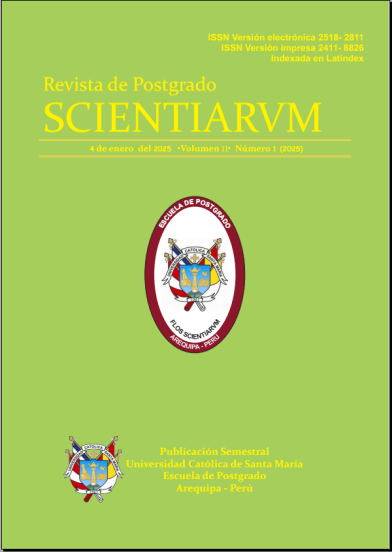PRESENCIA DE METALES PESADOS EN LA BIOTA ACUATICA(SCHOENOPLECTUS TATORA Y ORESTIAS SP.) EN LAS DESEMBOCADURAS DE LOS RIOS RAMIS E ILLPA DE LA RESERVA NACIONAL DEL TITICACA
Liliam Elizabeth Calcina Rondán1, Froilan Rodolfo Huaraya Chambi2
(1) Universidad Nacional de San Agustín. Arequipa
(2) Universidad Católica de Santa María. Arequipa
RESUMEN: El Lago Titicaca, el cual actúa como un dispersante natural para diferentes compuestos y elementos químicos que formarán parte del lecho acuático siendo asimilados y acumulados por la biota presente en el lago como Orestias spp. y Schoenoplectus tatora, recursos de importancia económica no solo para las comunidades que se encuentran dentro de la Reserva Nacional del Titicaca, sino también para la región de Puno. Dentro de la metodología de campo las muestras fueron tomadas en la desembocadura del río Ramis, en un número de diez muestras/ por especie y en la desembocadura del río Illpa seis muestras/ por especie, con un total de treinta y dos muestras con doble repetición; en la metodología de laboratorio se desarrollaron tres procesos con la técnica de absorción atómica: Análisis de polimetálicos, As (ambos por la técnica de flama y horno de grafito) y Hg (vapor frío – FIAS); este trabajo fue realizado en el laboratorio de química analítica de INGEMMET – Lima. Se determinó la presencia y niveles de Hg, Cu, Pb, Cr, Cd, Zn y As en músculo y branquias de Orestias sp y en tallo aéreo de Schoenoplectus tatora, encontrándose lo siguiente: Las muestras de Orestias sp en las agallas tienen valores más altos de concentraciones de elementos pesados en relación al músculo, excepto en Cr y As. Las muestras de Ramis e Illpa para Orestias sp presentan niveles de concentración de metales pesados por encima del límite permisible para consumo humano en los elementos Cu, Pb, Zn y Hg. Los niveles encontrados en Schoenoplectus tatora para los elementos Cu, Pb, Cd y As son considerados niveles de efecto tóxico muy bajo, mientras que el Hg es considerado de efecto tóxico moderadamente alto, estando dentro del rango normal de concentraciones en plantas sin observar efectos tóxicos, así mismo dentro de los niveles máximos tolerados por el ganado.
Palabras clave: Metales pesados, biota acuática, LMP, Reserva Nacional del Titicaca
SUMMARY: Lake Titicaca, which acts as a natural dispersant for different compounds and chemical elements that will form part of the aquatic bed being assimilated and accumulated by the biota present in the lake as Orestias spp. and Schoenoplectus tatora, resources of economic importance not only for the communities that are within the Titicaca National Reserve, but also for the Puno region. Within the field methodology the samples were taken at the mouth of the Ramis River, in a number of ten samples / per species and at the mouth of the Illpa River six samples / per species, with a total of thirty two samples with double repetition ; In the laboratory methodology, three processes were developed with the technique of atomic absorption: Analysis of polymetallic, As (both by the flame technique and graphite furnace) and Hg (cold vapor - FIAS); This work was carried out in the laboratory of analytical chemistry of INGEMMET - Lima. The presence and levels of Hg, Cu, Pb, Cr, Cd, Zn and As in the muscle and gills of Orestias sp and in the aerial stem of Schoenoplectus tatora were determined, finding the following: The samples of Orestias sp in the gills have more values high concentrations of heavy elements in relation to the muscle, except in Cr and As. The Ramis and Illpa samples for Orestias sp present levels of concentration of heavy metals above the permissible limit for human consumption in the elements Cu, Pb, Zn and Hg. The levels found in Schoenoplectus tatora for the elements Cu, Pb, Cd and As are considered levels of toxic effect very low, while the Hg is considered of toxic effect moderately high, being within the normal range of concentrations in plants without observing toxic effects, likewise within the maximum levels tolerated by cattle.
Key words: Heavy metals, aquatic biota, LMP, Titicaca National Reserve
Revista Seleccionada
Julio 2018 Volumen 4 - Número 2 P 47-51
DOI: 10.26696/sci.epg.0084
Enlaces
CIENCIAS SOCIALES Y HUMANIDADES
RUTA PROCESAL Y RECONOCIMIENTO MEDICO PSICOLOGICO DE LA VIOLENCIA FAMILIAR EN EL PERU EN EL AÑO 2018
EL DERECHO EN LA REALIDAD Y NO EN LA FICCION: EL USO DE MATONES EN LOS DESALOJOS
IMAGEN O REPUTACION ¿CUAL ES MAS RENTABLE?
CIENCIAS BIOLÓGICAS Y DE SALUD
EVALUACION IN SILICO DE LAINTERACCION MOLECULAR ENTRE POLIFENOLES Y PROFILINAS ALERGENICAS
CONSECUENCIA DE CARNES NO TRATADA, EN ESCOLARES DE 12 AÑOS DE EDAD, EN CAÑARIBAMBA ECUADOR


